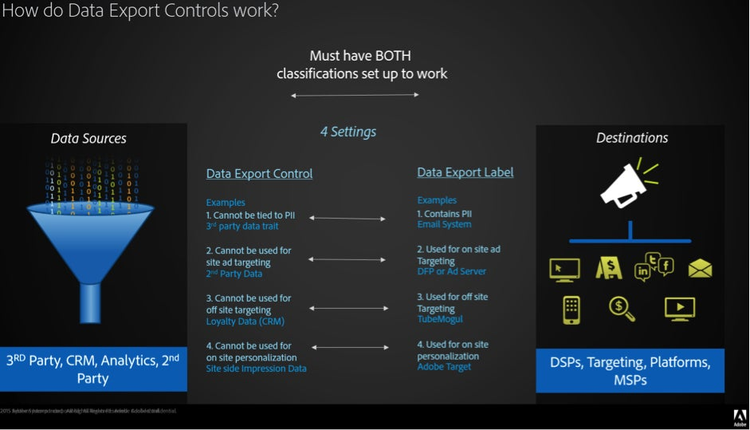Audience Data: Three Rules you Need to Know

Data control is a hot topic this year with publishers continually updating their policies in order to better protect their number one asset – audience data. As the volume of restrictions around the use of audience data increases, marketers are being challenged with finding new ways to not only enforce this legislation but also to adapt their digital marketing strategies to enable them to meet their objectives.
For those of you unaware of such restrictions, take a look at Google’s latest legislation banning the use of third-party data in Re-marketing Lists for Search Ads (RLSA).
With this in mind, here are my top three Do’s and Don’ts designed to ensure you are making the most out of the audience data you have available to you today.
1. Understand the relative value of each audience data source. Econsultancy recently asked over 300 senior marketers to rate first, second and third party data against 4 different statements. As a reminder, first party audience data is defined, collected and owned by your business. Second party audience data is defined, collected and owned by a trusted partner and third party audience data is defined collected an owned by a data provider (such a eXelate, VisualDNA etc.).

Source: Econsultancy – The Promise of First Party Data 2015
Clearly a brand’s first party data delivers the most value when activated against a marketing strategy. Data Management Platforms (DMPs) provide the infrastructure for a brand to activate all three type of audience data therefore, be sure to choose a DMP that has the ability to collect and activate the largest amount of your first party audience data as possible. A good example is Adobe’s DMP, Audience Manager, which has a native integration with the market leading web analytics platform, Adobe Analytics. This allows the marketer to define and activate first party audience data (both online and offline data) across multiple third party platforms (DSPs, Ad Servers etc.) within a unified workflow:

The challenge is that there is often not enough first party data to fulfil all of a marketer’s needs (especially around new customer acquisition). That’s where second and third party data can be used to help fill the gaps but be careful! Some publishers/networks, like Google, have begun to restrict how these additional data sources are used. This leads me to my next point…
2. Govern the use of your brand’s audience data. Be sure to understand the rules and regulations around the types of audience data you are choosing to activate for every platform where you are choosing to activate it.
Here’s an example of legislation regarding any brand’s use of third party audience data to target Google’s RLSA campaigns:

This means brands are not allowed to send third party audience data to Google for targeting RLSA campaigns. The big question is how can the use of third party audience data (or any other audience data for that matter) be governed within a business?
Since the Data Management Platform (DMP) is typically where this audience data is collected and sent out to third party platforms, look here for controls on how each type of data is used. Setting the correct governance within your DMP will ensure your brand uses its audience data in accordance with every third party platform’s policy and will ensure campaigns remain active and correctly aligned to your marketing strategy.
Adobe’s DMP, Audience Manager, has 3 key features as part of the Data Export Controls it offers to meet these needs:
- Automated controls to comply with global privacy policies, corporate governance & partnership agreements.
- Enablement of truly cross-channel marketing campaigns to offer unified, personalised experiences across a brand’s website, email, display, search, social and video channels.
- Flexible controls for every user of the DMP which can be customised based on their individual requirements.
3. Enable your marketers to get the job done. Whether it’s the analytics team, the CRM team, the brand marketing team or the performance marketing team, there are many groups within your organization that will need to use audience data in different ways to meet different objectives. It’s important that the governance system within your DMP allows for flexibility across these teams so that each of them can function within both your organization’s privacy policy and those of every third party platform your organization uses to execute marketing campaigns.
For example, whilst there might be restrictions imposed on the Paid Search Team around using third party audience data to target audiences in Google RLSAs, third party audience data can be used by the Display team to run look-a-like models to find new prospects who have never visited to the website before but look similar to a high value customer segment (i.e. repeat purchasers).
Here are a few examples of the types of governance rules which can be configured in Audience Manager to ensure each team can meet their objectives:

With the Digital Marketing ecosystem continuing to evolve at a rapid pace, it’s highly likely the legislation governing the use of audience data will continue to evolve alongside it. Having a robust, flexible system in place to govern the use of your organisation’s audience data will ensure a futureproofed solution for success.